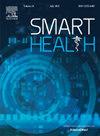用于心脏健康的智能植入式设备:一种新型的自供电无线ECG监测系统,使用能量收集和机器学习驱动的异常检测
Q2 Health Professions
引用次数: 0
摘要
智能植入式设备的引入正在改变心脏健康监测的面貌,通过持续和实时的心电图监测,有助于心脏病变的早期诊断。本文介绍了一种新开发的自供电无线心电监测系统CardioHarvest-Net,该系统利用人体的生理运动作为供电源,以减少频繁充电的可能性。这种自供电能力消除了对传统电池的依赖,从而为现实条件下的连续、长期心脏监测提供了可行的解决方案。CardioHarvest-Net实现了一种增强的基于机器学习(ML)的异常检测模型,该模型可以学习和适应每个患者的心脏行为,从而对与心律失常、心肌梗死和其他心脏疾病等疾病相关的异常心电图体征提供高灵敏度。CardioHarvest-Net模型将CNN用于ECG等生命体征的特征提取,并使用LSTM进行时间特征提取,以便在现实环境中进行准确的异常检测。评估结果表明,通过CardioHarvest-Net对心脏健康现象的增益评分的检测准确率为97.2%,异常召回率为95.3%,表明该系统可以作为一种有效、及时的监测工具,对可能发生的心脏事件发出信号和预警措施。整个系统检测异常的平均响应时间为10 ms,这使得系统的干预能力相当快。此外,它们在低功耗、从急性到需要长时间操作的慢性疾病的实际体内条件下使用78%的能量积累效率。该机器学习模型运行在适用于可穿戴和植入式医疗设备的节能微控制器上,并具有反馈适应性,可根据单个患者随时间变化的数据提高预测的准确性。这项研究的结果进一步说明了CardioHarvest-Net的可行性,通过解决功率独立性的限制和促进实时跟踪,实现可持续的心脏生态位。这一进展是朝着心脏可靠性的预防性、长期方法迈进的一个突破,增强了我们的方法,为持续、个性化的心脏监测提供了坚实的框架,并在心脏发生重大事件时及时采取行动。本文章由计算机程序翻译,如有差异,请以英文原文为准。
Smart implantable devices for cardiac health: A novel self-powered wireless ECG monitoring system using energy harvesting and machine learning-driven anomaly detection
Introduction of smart implantable devices is changing the face of cardiac health monitoring through continuous and real time ECG monitoring useful in early diagnosis of cardiac pathologies. This paper describes CardioHarvest-Net, a newly developed self-powered wireless ECG monitoring system that employs, physiological movements for its power in order to reduce the probability of frequent power replenishment. This self-powered capability eliminates dependency on conventional batteries, thereby offering a viable solution for continuous, long-term cardiac monitoring in real-world conditions. CardioHarvest-Net enables an enhanced machine learning (ML)-based anomaly detection model that learns and adapt to each patient's cardiac behavior to provide high sensitivity in abnormal ECG signs related to diseases like arrhythmia, myocardial infarction, and other diseases of the heart. The CardioHarvest-Net model applies CNN for feature extraction of vital signs such as ECG and uses LSTM for temporal feature extraction for accurate anomaly detection in real-world settings. Evaluation results reveal that gain scores of cardio health phenomena via CardioHarvest-Net is a detection accuracy of 97.2 % and the anomaly recall rate of 95.3 % that qualifies the proposed system as an effective and timely monitoring tool of putting up a signal and cautionary measure on possible event of cardiac occurrences. The average response time for an entire system to detect an anomaly is 10 ms, which makes the system's intervention capacity rather fast. Moreover, they use a power build-up efficiency of 78 % in otherwise low power, real-life in-vivo conditions ranging from acute circumstances to chronic conditions requiring prolonged operation. This ML model is running on an energy-efficient microcontroller suitable for wearable and implantable medical devices along with a feedback adaptation that enhances the accuracy of the predictions based on data that changes over time concerning an individual patient. The outcomes of this study further state the viability of CardioHarvest-Net to transform sustainable cardiac niche by addressing limitations into power independence and facilitating real-time tracking. This development is a breakthrough in moving towards the preventive, long-term approach to cardiac reliability enhancing our method in a manner that offers a solid framework for constant, individualized cardiac monitoring, and timely action in cases of essential occurrences in the heart.
求助全文
通过发布文献求助,成功后即可免费获取论文全文。
去求助

 求助内容:
求助内容: 应助结果提醒方式:
应助结果提醒方式:


